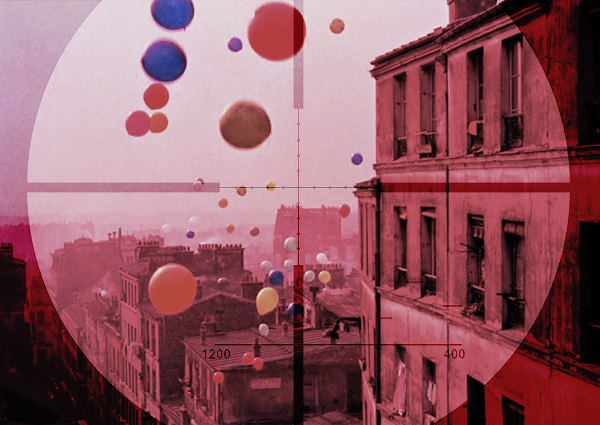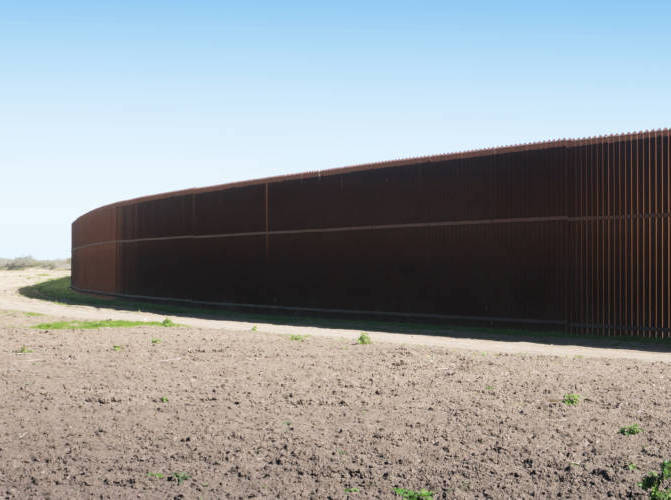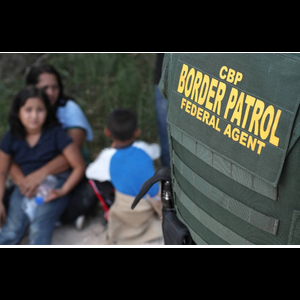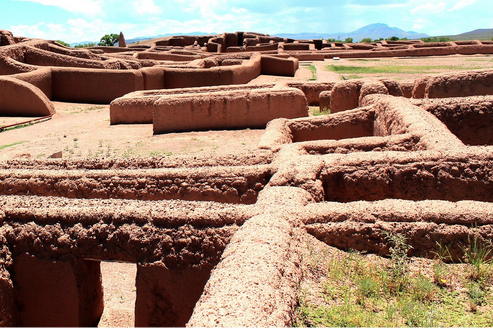PANCHIMALCO, El Salvador
THEIR M-16s at the ready, five police officers stand fortressed behind a 4-foot wall of sandbags protecting their station. More officers and a phalanx of giant orange cones form another defensive wall limiting car and foot traffic along the cobblestone street. They are waiting for the arrival of a convoy of white trucks and SUVs and the start of a dangerous mission.
In the convoy is a team from the Instituto de Medicina Legal, the Institute of Legal Medicine, or IML, El Salvador’s forensic medicine unit, the organization charged with identifying the dead and figuring out what killed them. They’re sort of a CSI team for the most violent country on the planet.
The police officers’ mission is to escort the IML team safely in and out of the jungle near Rosario de Mora, one of several areas in El Salvador where gangs go to kill, dismember, and bury their victims. The testimony of a lone witness prompted investigators to conduct an exhumation.
The police officers have more immediate concerns than the long-dead victims. The atmosphere is tense in the small town 20 miles southwest of the capital, San Salvador. Five members of the 18th Street Revolucionarios gang are being buried, killed by police just two days before.
The five are being buried near the grave of the man they allegedly killed — Pablo Cándido Vega Ramírez, a presidential guard who was gunned down last April in front of his family. Pro- and anti-gang websites posted gory pictures of the five gangsters lying dead with their guns next to them and claim that the raid was the work of paramilitary death squads, infamous for crimes during the country’s civil war, now revived to kill gang members.
The funeral draws more than 50 mourners, family members, and fellow gangsters. The five are due to be interred around the same time that the IML team is due to rendezvous at the station.
The August heat is sweltering, and everyone is on edge.
Inside the station, officers talk about the country’s siege mentality. “Violence around here is evolving, things are getting worse,” says one agent, as he prepares to relieve his colleagues patrolling the cemetery. “They used to kill one person among them (between the gangs). Now there are massacres. And they’re using different weapons: M-16s, AK-47s, grenades, and other armaments for war.”
THE FORENSICS CONVOY finally arrives, and the group sets off along a route littered with reminders of yesterday’s civil war and today’s gang violence. The convoy passes an old campaign poster for Rodolfo Parker, a man implicated in atrocities by the United Nations Truth Commission set up during the post-civil war peace accords in 1992. The UN report concluded that Parker, the former legal adviser to the military’s high command, had “altered statements in order to conceal the involvement of high-ranking officers” in the slaying of six Jesuits and their housekeepers in 1989. Parker never faced justice and ran successfully for the country’s Legislature.
When the road ends, the IML team unpacks its equipment and begins the two-hour hike through a jungle that was once a killing ground. Empty homes with bullet-riddled walls are a reminder of the violence that never ended. Gangs continue to force residents of entire communities in the area around Panchimalco to flee their homes. During and after the war, hundreds of gangsters, police officers, soldiers, and civilians have been killed and buried in clandestine graves in the area.
As they hike, Oscar Quijano, the head of IML’s forensic anthropology unit, speaks about his early professional life during El Salvador’s civil war. “There were people left beheaded in the streets, people executed, people taken out of their homes, shot, and then dumped in a ravine,” he says. The difference between the civil war and the current gang violence is mostly cosmetic, he sighs. “We recently found 29 bodies in one grave. It was huge.”
They arrive at the Rosario de Mora grave site near the top of a steep hill and quickly unload their equipment. Half of the site has already been excavated — a fully dressed skeleton wearing a red basketball shirt and black pants is partially visible.
The preliminary work has been done by Israel Ticas, a self-taught “criminalist” retained by the office of then-Salvadoran Attorney General Luis Martinez. To say that the headline-hungry Ticas’s methods are unorthodox is a vast understatement: He’s been filmed eating inside grave sites while excavating and celebrating his birthday in grave pits, and accused of delaying digs for extended periods of time. Critics have also questioned his professional credentials.
All of which makes it awkward for the two parties to dig side by side in the jungle that day. The tension between the IML staff and Ticas is palpable, as Ticas steps aside and hikes down from the hill while the IML team unpacks.
After a few hours measuring the site, analyzing the remains, and photographing them, Quijano and his team begin removing the bones and other artifacts to further analyze them at the IML laboratory. Then they hike back to the parking area, load up their equipment, and drive off without even saying goodbye.
Ticas, several police officers, and a representative from the attorney general’s office stand around chatting in the parking lot. Pushed about his qualifications, Ticas grins: “I’m a natural criminalist.” Asked about his academic credentials, he admits that he has none.
With the IML team far down the road, the AG official suddenly has questions about who approved the presence of a journalist at the dig. (The IML chief had approved the visit.) She then orders the police officers to erase all the digital photographs taken in the jungle. (Back safely in the United States, the photographs were later recovered from the memory card.)
BONE FRAGMENTS MAY be the best symbol of El Salvador’s history, its present, and its future. Fragmentation within Salvadoran civil society keeps thousands of graves full of bone fragments and bodies. Fragmentation in the political arena enables impunity. Only about a dozen or so low-level soldiers have been held responsible for the deaths of 80,000 civilians during the war. Fragmentation in the justice system prevents identification and investigation — only 3 percent of all violent crimes today are investigated. The fragmented hearts of some Salvadorans move them to violence, while others are left psychically tortured, waiting years, sometimes decades, for closure.
The only way to find that closure is to become a student of death. The best and brightest of them work at the IML offices in San Salvador, where Quijano and his team brought the remains from the Rosario de Mora site. The compound has high walls, barbed wire, and security checkpoints, and is patrolled by heavily armed police and soldiers. IML is a small town within the fortress, where the living try to make sense of the dead.
One of the most surprising things to find inside the compound are crowds of people — sitting on wooden benches in front of a wall with a glass case. Inside are pictures under the headline: Disappeared Persons. There are hundreds who come to IML seeking answers, seeking closure.
In one of the compound’s bungalows is the forensic anthropology lab that looks like what you’d expect — tables with tools, tables with bags of bones, tables with skeletons.
Saul Quijada is a member of the forensic anthropology team and an auxiliary trainer for the renowned Argentine Forensic Anthropology Team, or EAAF, which did pioneering work on mass graves from that country’s dirty war from 1976 to 1983. Wearing a blue polo shirt, the stocky Quijada looks more like a wrestler than a scientist who specializes in odonotology and traumatology, the science of injuries and what causes them.
Men like Quijada have a unique ability: They can quickly recognize the damage to tissue, skin, bones from various weapons — knives, machetes, explosives, shrapnel, high caliber weapons, mortars, mines, and more. “Many of these armaments,” he adds, “are still circulating.”
Quijada examines a skeleton, much browner than others, a sign it is older and in a greater state of decomposition. The tag on the body says “El Mozote,” two words that, in addition to naming a town in Morazan province, carry great meaning. El Mozote is the site of the worst massacre in modern Latin American history and the best-documented case of forensic research in El Salvador.
The brown bones on the table are from one of the more than 1,000 villagers killed there by the US-trained Atlacatl counterinsurgency battalion in 1982. News of the massacre played a definitive role in Congressman Joe Moakley’s and others’ calls for the Reagan administration to cut aid to the Salvadoran government. Subsequent investigations by forensics specialists have revealed that most of the El Mozote victims were women, children, and elderly people.
Like in the massacres during the war era, the gangs who now make it their business to fill up mass graves often use young gang members to target other youngsters. “I just examined the bodies of individuals who were 12-year-olds. We’re also seeing more violence against women,” Quijada says.
The victims and their killers filling El Salvador’s mass graves are, in fact, getting younger. “Around 2000, the average age of victims was 30 to 35 and then 20 to 30,” says Quijada. “From 2010 to present, we started seeing ages decrease, from 17-year-olds to 15-year-olds.”
Looking at a reconstructed skull, which had a clean line running from the forehead to the back of the head, Quijada points at wounds. “They were caused by armas blancas: machetes, hatchets, or piochas, instruments used for agricultural work. This reflects a pattern we also see (among gangs) today.” It is, he says, “in part because of our cultural origins.”
Nearby is the so-called bone room, a large, temperature-controlled space with several rows of shelves. They’re stacked with rows of skulls and dozens of boxes stamped with the logo of the Salvadoran Supreme Court. Inside are the boiled, scraped, and cleaned remains of some of the many thousands of victims found in graves and at crime scenes across the country. The remains of El Mozote victims were just across aisle from the bones of victims killed just a month earlier, in July.
Each box represents not just countless hours of forensic work, but the chronicle of a death untold. Together they are only a few pieces of a massive, multilayered, and mysterious jigsaw puzzle. Housing all the remains, still buried and uninvestigated, would require exponentially more bone rooms.
“One of the most destructive things a person can experience,” says Quijada, standing amid the shelves, “is luto prolongado (prolonged mourning), not knowing where your family is for years. People spend five to seven years, in many cases 30 years without knowing where their family is.”
“In addition to supporting justice,” he said, “our job is to reconstruct.”
LIKE QUIJADA, WILFREDO Medrano also sees his work in terms of a jigsaw puzzle, in this case trying to rebuild a legal system corrupted by abuse and shattered into pieces by the country’s deeply rooted divisions.
Medrano is an attorney at Tutela Legal, a historic human rights advocacy and documentation organization founded in 1982 by the Catholic Church. Tutela’s reputation as a major center for documenting and denouncing human rights violations provides it with a unique perspective. But as eminent an organization as it is, even Tutela isn’t immune from the country’s fragmentation.
Medrano belongs to a separate and new Tutela, “Tutela Legal María Julia Hernández,” organized after conservative Salvadoran Archbishop José Luis Escobar Alas decided to close the main organization’s storied archives just days after the Salvadoran supreme court accepted a historic challenge to an amnesty law, which prevents investigations like those looking into the mass murders from the civil war. The fate of those archives is still being debated in courts and remains uncertain. The more than 50,000 documents it holds will be critical to any forensic and legal assessment of — and responsibility for — El Salvador’s many mass graves. The UN commission attributed almost 85 percent of those deaths to “agents of the state, paramilitary groups allied with them, and death squads.”
The importance of the archives was on display in 2012 when Tutela and Medrano won a major ruling on the El Mozote case before the Inter-American Court. Considered groundbreaking, the ruling instructed the Salvadoran government to reopen the El Mozote investigation and implement more than a dozen measures of reparation for the families of the victims, including financial restitution, community development, educational opportunities, and a formal pardon from the government. The ruling also ordered the continued investigation and exhumation of the site by the attorney general’s office, IML, and others. What the court didn’t order, however, was that those charged with investigating would get along.
Despite its groundbreaking nature, El Mozote was also mired in delays and divisions. As exhumations of the site resumed, Medrano and his colleagues heard about problems involving the implementation of the judgment from family members of victims and witnesses from the El Mozote area.
The initial problem, he says, was that the attorney general’s office was “re-victimizing the victims.” Medrano meant the triggering of trauma that can happen when families of victims and witnesses to violent events are not handled according to the kinds of strict interview protocols adhered to by the EAAF and others. This was, he says, in violation of the El Mozote court decision. On hearing these stories from their clients, Medrano and Tutela Legal María Julia Hernández asked the judge overseeing the case to stop the process in January 2014.
During the legal proceedings, Tutela asked Israel Ticas, the person charged with exhumations of the attorney general’s office, to appear for questioning. “We asked him to attest to his credentials,” says Medrano, “to say whether he was an forensic archeologist or anthropologist, a criminalista or something.” Ticas told the judge he had no credentials.
“The methods (Ticas) uses are not standard according to international standard. We can’t endorse someone who is not accredited. There’s a divorce between IML and Ticas. Using two different protocols can give different results, and each family will get a different result,” says Medrano, who also requested the judge bring the Argentine forensic team and IML back to the El Mozote sites.
Medrano and others see the El Mozote case as a major ruling on which they hope to build thousands of other cases related to mass graves and in a justice system whose fragmentation allows the gang killings of the present to continue and expand with impunity.
In Medrano’s office, there’s a map of El Salvador with different colored circles representing mass grave sites. “Seven thousand people disappeared during the war,” he says. “There are many, many graves from the war; mass graves, individual graves, clandestine graves. Then you have the clandestine graves we know of and haven’t done any exhumations.” On top of that, there are the graves containing the remains of victims of other, lesser known war crimes that resulted in the deaths of more than 80,000 people during the war.
He points at a different part of the map without blinking. “In these zones there are thousands of graves.”
Medrano feels urgency about making the justice system work.
One of the main obstacles to justice — both past and present — is the amnesty law passed in the wake of the war. The legislation, approved in 1993 by conservatives in the Legislative Assembly, protected all perpetrators of war-related crimes from prosecution. Since then, both former government forces and the former guerrillas now in power are criticized — the right for intransigence, the left for foot-dragging.
But the law is being challenged in the country’s supreme court and momentum to repeal it is growing, as are protests by military leaders and their supporters. Besides the military officials who fear prosecution, some of those most attentive to attempts to rebuild the legal system are El Salvador’s gang leaders.
BACK IN SAN Salvador, in the poor community of Nuevo Israel, Santiago, one of the few people in the country authorized to speak on behalf of both the country’s two largest gangs, MS-13 and 18th Street, says he understands well the mechanics of fragmentation. The gangs themselves are decentralized and fragmented. Many local and regional gangs and gang affiliates organize, charge taxes, and kill according to their own dictates. “We live in a country with a long history of violence. We’re just making it worse,” he says.
But he is not without hope. He and other leaders were involved in negotiating a highly touted and controversial truce that lasted several months and cut the murder rate in half. Critics, for their part, claim that the decrease in homicides came with an increase in the number of bodies buried in clandestine mass graves.
Asked how he thought the era of mass graves in El Salvador might end, Santiago is philosophical. “The institutions — the police, the courts, human rights investigators — all that’s related to the state — have to be professionalized. Everybody knows most of the killings here are never investigated, so you can kill with impunity,” he says. “We need to figure out who really killed whom. . . . We need justice.”




